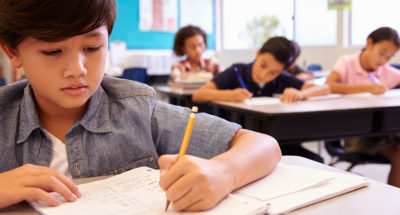
Dialogue Journals for Elementary Students
Teachers and students write to each other in journals on a regular basis, helping to build positive teacher-student relationships and to grow students’ self-awareness and social awareness.

Teachers and students write to each other in journals on a regular basis, helping to build positive teacher-student relationships and to grow students’ self-awareness and social awareness.
Students will:
Think of a teacher who took the time to get to know you as a person. How did this teacher make you feel? Did you see yourself as a person or as a student differently as a result of this connection?
Do you find that your relationships with students are improving after using the journals a few times? How? As time passes, do students demonstrate more self-awareness in their writing?
Several studies suggest that dialogue journals between teachers and students can help with classroom management, building rapport with students, and growing students’ self-esteem and problem-solving abilities.
Academically, dialogue journals may increase students’ motivation to write and also provide a space for students who may not be comfortable expressing themselves in class. For example, second language learners, newly arrived immigrants, and more introverted students may be more likely to share their questions about academic content.
Numerous studies show that the relationship between teachers and students is critical to both academic achievement and student well-being, yet building a trusting relationship with students can be difficult for numerous reasons. Demands placed on teachers and challenging student behavior are just two kinds of roadblocks. Dialogue journals offer both teachers and students a safe mechanism to get to know each other and build mutual regard.
In addition, dialogue journals may offer an alternate way for students to increase their self-awareness by allowing them to express and explore their emotions through writing. Building a collaborative relationship with teachers may also improve students’ social awareness.

Are you ready to build a kinder, happier school where everyone belongs? Join Greater Good Educators! Explore the science of well-being in a supportive community of educators from around the world. Registration is now open for the 2025-2026 school year!
Comments